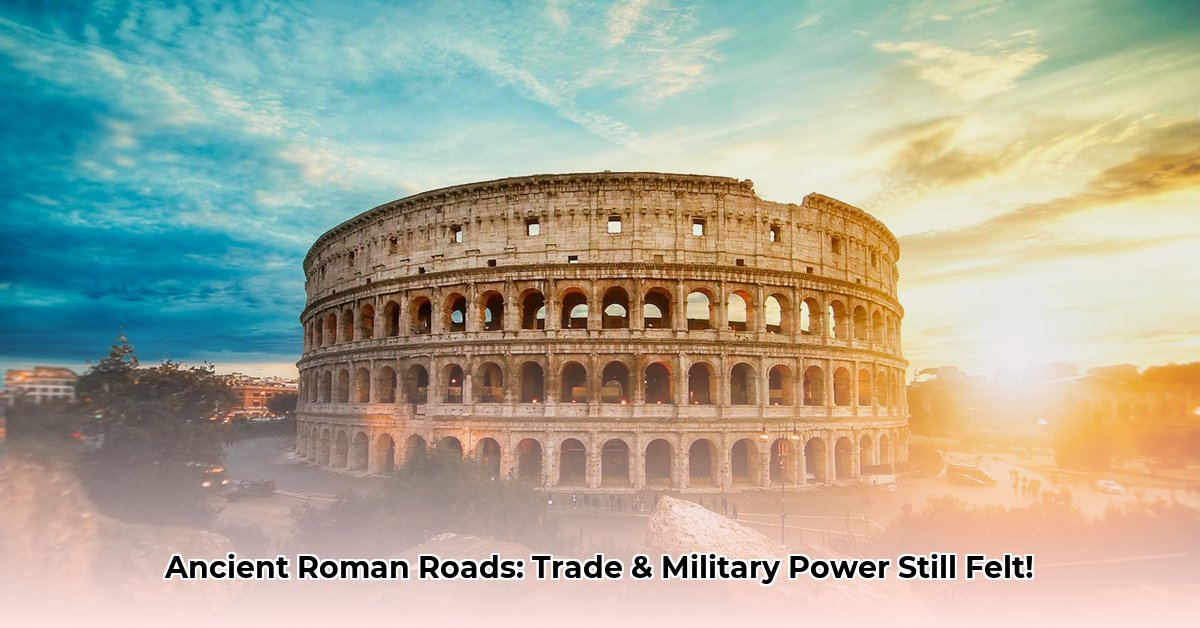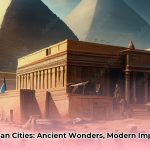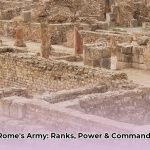Ever wonder how the Roman Empire, a sprawling colossus that once held sway over much of the known world, managed to stay connected, cohesive, and dominant for centuries? The secret lay beneath their sandals: a sophisticated network of ancient Roman roads. These were not mere paths, but monumental feats of Roman engineering, designed for unparalleled speed, efficiency, and the seamless movement of vast legions and vital goods. Far more than simple tracks, these roads were the very arteries of the empire, relentlessly pumping trade, military might, and innovative ideas across immense distances. Let’s delve into the enduring story of Roman roads, from their remarkably straight lines to their lasting impact on global infrastructure today.
The Imperium’s Arteries: Forging Connectivity and Control
Starting around 300 BC, the Romans embarked on an ambitious project: to crisscross their expanding territories with roadways so impressive, they would remain legendary – and even partially in use – millennia later. These were not built for leisurely sightseeing, but as critical instruments maintaining the empire’s vast reach, economic prosperity, and formidable power.
Military Efficiency and Strategic Command
Picture Roman soldiers, encumbered by heavy armor, marching for miles under the relentless sun. What enabled these legions to move with such astonishing speed and efficiency across diverse terrains? The answer lies in the strategically planned, remarkably direct military routes. These were not for scenic detours; they were engineered for rapidity and unyielding straightness.
Consider the strategic advantage: a rebellion in a distant province could be met with an immediate, overwhelming military response. If a border faced a sudden threat, reinforcements could arrive with unprecedented swiftness. These roads empowered Rome to project its military strength precisely where and when it was needed, effectively serving as an extension of their swords and shields. A legion could bring its own baggage train (impedimenta) and construct its camp (castra) daily along these routes, facilitating sustained campaigns.
Economic Lifelines: Fueling Trade and Prosperity
Beyond the disciplined tramp of marching boots, ancient Roman roads served as the vital arteries of the Roman economy. They were the superhighways through which wealth and varied goods flowed continuously. Imagine ships docking in Roman ports, laden with Egyptian grain, exotic spices from the East, or fine wines from Gaul. All these commodities, and countless others, would then be efficiently transported across the sprawling empire along these meticulously maintained routes.
But their function extended beyond mere logistics. These roads also facilitated rapid communication through systems like the cursus publicus, the imperial postal service. Messages, crucial orders, and vital news could be relayed quickly from one distant corner of the empire to another, enabling an effective, centralized government. In a very real sense, these ancient Roman roads functioned as the internet of their era, deeply connecting people and ideas across immense distances, fostering a powerful sense of shared Roman identity.
Engineering Masterpiece: How Roman Roads Were Built
So, what was the secret to constructing these engineering marvels that defied time? The Romans were not merely pragmatic builders; they were incredibly skilled engineers who profoundly understood the importance of a resilient foundation. Their construction methods were so effective that many of these roads can still be observed – and even walked upon – today. It was a careful, almost artistic process rooted in a precise methodology.
Meticulous Surveying and Planning
Before any ground was broken, Roman road construction began with meticulous surveying. Civil engineers (agrimensores) used tools like the groma to achieve precise right angles and straight lines, and the chorobates (a long, wooden level) to ensure gradients were consistent. They would lay down a rigor, a straight line, and ensure remarkable directional straightness over long stretches. Many sections extended for dozens of miles in a ruler-straight fashion, demonstrating their commitment to the shortest distance between two points, even if it meant cutting through hills or building over ravines.
Layered Construction: Built to Last
The libratores then began excavating the fossa (trench) down to bedrock or firm ground. The construction itself was a multi-layered process, ensuring unparalleled durability and drainage.
| Layer | Description | Purpose |
|---|---|---|
| Foundation Trench (fossa) | Excavated ditch down to firm ground, varying in depth | Established a stable, robust base for the entire structure. |
| Foundation (statumen) | Large, often rough-hewn, flat stones tightly packed into the fossa, sometimes set in cement. | Provided the primary, solid foundation, distributing immense weight evenly. |
| Coarse Concrete (rudus) | A layer of crushed stone, gravel, or coarse concrete (often mixed with pozzolana, a volcanic ash). | Formed a stable, compacted base layer, adding structural integrity and bulk. |
| Fine Concrete (nucleus) | A mixture of finer gravel, sand, and lime-based mortar, compacted firmly over the rudus. | Created a smoother, dense intermediate layer, preparing the surface for the paving. |
| Surface Layer (summa crusta / pavimentum) | Carefully fitted polygonal or rectangular paving stones (basalt, limestone) or dense gravel. | The durable, wear-resistant road surface, crowned slightly for drainage. |
| Lateral Drainage | Ditches (fossae) and slight cambering (sloping surface) of the summa crusta. | Crucial for shedding rainwater, preventing pooling, erosion, and structural compromise. |
The Romans possessed an astute understanding of hydraulics, incorporating sophisticated drainage systems through lateral ditches and by subtly cambering (sloping) the road surface. This prevented water from pooling and undermining the structure. This layered, durable construction, capable of withstanding heavy traffic for centuries, wasn’t just innovative; it established a foundational model for road infrastructure development for countless generations thereafter, influencing methods long after the empire’s decline.
Overcoming Obstacles: Bridges, Tunnels, and Causeways
Roman engineers preferred to conquer natural obstacles rather than circumvent them. Their solutions included:
- Bridges (pontes): From simple wooden structures on pilings to magnificent stone arch bridges, Romans were pioneers in bridge construction, often using early forms of concrete. The Ponte di Mele or the impressive Narni bridge (180m long, 33m high with 32.1m arch spans) are testaments to their skill. Many Roman bridges, like the Milvian Bridge in Rome, are still in use today.
- Tunnels: To maintain straightness and avoid detours, tunnels were carved through mountains. Notable examples include the Cumaea (1,000m), Cripta Neapolitano (705m), and Grotta di Seiano (780m) tunnels. Often excavated from both ends (counter-excavation) with remarkable precision, these projects could take years to complete.
- Causeways: Over marshy ground, causeways were built by sinking large quantities of stone, raising the road significantly above the wet terrain. In some provinces, log roads (pontes longi) were used for similar purposes.
Iconic Pathways: Legends of Stone and Ambition
At the zenith of Rome’s development, no fewer than 29 great military highways radiated from the capital, and the empire’s 113 provinces were interconnected by 372 great roads, totaling over 400,000 kilometers (250,000 miles).
The Appian Way: Queen of Roads
The legendary Appian Way, known to the Romans as the Via Appia, stands as an unparalleled symbol of Roman engineering might. Initiated in 312 BC by the censor Appius Claudius Caecus, it was one of the earliest and most vital roads, meticulously engineered to connect Rome with the strategically important southern regions of Italy, extending all the way to Brindisi.
The Via Appia functioned as an indispensable trade route, a primary military highway, and a potent symbol of Rome’s expansive domain. To walk along the remarkably preserved segments of this road today is to step directly into history. One can almost visualize the distant rumbling of chariots and hear the bustling chatter of merchants and the disciplined cadence of legions who traversed this magnificent path centuries ago.
Diverse Designs for Specific Missions and Milestones
While all ancient Roman roads ultimately served the grand purpose of connecting the empire, their specific construction and design often varied significantly based on their primary function. Military roads, for instance, were typically engineered to be as unyieldingly straight as possible, sometimes leading to steep 15-20% gradients in mountainous regions. This design priority facilitated the rapid deployment and efficient movement of troops and supplies, often cutting directly through challenging hills and valleys, irrespective of the natural terrain.
Civilian roads (viae privatae or viae vicinales), on the other hand, frequently adopted a more winding, organic route. These were primarily designed to connect local towns and villages, ensuring easy accessibility for farmers, local traders, and ordinary citizens. While perhaps less direct, these routes offered greater convenience for the day-to-day needs of the local populace. This adaptability in Roman road construction underscores their pragmatic approach, tailoring designs to meet the specific requirements of the regions they served.
Milestones (miliaria) were a common feature, typically circular columns marking distances in Roman miles (milia passuum – one thousand paces, about 1,476 meters or 4,843 feet). These stones often inscribed the distance to the Roman Forum and details about officials who built or repaired the road, serving as valuable historical documents. Augustus even established the Miliarium Aureum (“golden milestone”) in Rome, from which all major roads were considered to begin.
Administration and Logistics: Keeping the Empire Moving
The construction and maintenance of these roads were considered functions of the greatest weight and importance in Roman society.
Funding and Oversight
Initially, the censors held paramount authority over road construction and repair. As the empire grew, this responsibility devolved to military commanders, special commissioners (curatores viarum), and eventually emperors themselves. High officials and even private citizens with an interest in the roads might contribute funds. Augustus, in particular, took a personal interest, granting himself and subsequent emperors significant authority over the road system connecting Rome to the rest of Italy and the provinces.
Maintenance was a continuous effort. While major public roads (viae publicae) were maintained at public expense, neighboring landowners often contributed or were required to perform repairs on local roads (viae vicinales). Within cities, householders were typically responsible for the street section passing their property, with public buildings’ sections maintained by the aediles.
Travel Services and Safety
For officials and those on imperial business, the government maintained way stations called mansiones (“staying places”) roughly every 25-30 kilometers (16-19 miles). These provided complete villas for official travelers, and often, permanent military camps or towns grew around them.
For non-official travelers, a private system of cauponae (inns, often disreputable) and later tabernae (hostels, which could be more luxurious) offered refreshment and lodging. A third system, mutationes (“changing stations”), located every 20-30 kilometers (12-19 miles), provided services for vehicles and animals, including wheelwrights, cartwrights, and veterinarians (equarii medici). These stations enabled rapid relay travel, allowing horse-drawn carts to cover 40-50 kilometers (25-31 miles) per day and individual riders even more.
Road safety was maintained by special detachments of imperial troops, stationarii and beneficiarii, who patrolled the roads, manned police posts, and deterred bandits, ensuring secure passage for all travelers and goods.
Mapping the Network
The Romans meticulously mapped and documented their road network. While detailed topographical maps were rare, itineraria – simple lists of cities and towns with distances – were common. The most famous example is the Tabula Peutingeriana, a 13th-century copy of a 4th-century AD Roman map, providing a schematic route-planner of the entire empire’s road system.
An Enduring Legacy: From Ancient Rome to Modern Infrastructure
The profound influence of ancient Roman roads extends far beyond the historical boundaries of the Roman Empire. Indeed, a remarkable number of modern roads across Europe still trace and utilize the exact routes originally established by the Romans millennia ago. The sheer durability and ingenuity embedded in their designs continue to inspire contemporary civil engineers.
Key Takeaways:
- Roman roads were fundamental to the empire’s military control, vibrant economy, and cultural integration.
- Their construction showcased unparalleled advanced engineering, featuring layered designs, meticulous surveying, and sophisticated drainage, principles still evident in contemporary infrastructure.
- These ancient thoroughfares enabled swift military movements, facilitated efficient trade across vast distances, and actively promoted the widespread dissemination of culture.
- The elaborate system of administration, maintenance, and travel services supported the vast network, ensuring its functionality for centuries.
- The enduring brilliance of Roman road designs continues to offer invaluable insights for modern civil engineers, historians, and urban planners alike.
- Their legacy is proof of the transformative power of robust infrastructure, underscoring how well-designed transportation networks can profoundly shape societies, propel economies, and even alter the very course of history.
As the enduring adage declares, “All roads lead to Rome,” and in the literal sense, it is strikingly true for many. The ancient Roman roads that remain in use today, centuries after their foundational construction, stand as unequivocal measures of their enduring success and foresight.
Modern Road Design Inspired by Ancient Rome?
The Romans were not just master builders; they were strategic visionaries. Their meticulous methodology for road construction, combined with astute strategic planning, offers a veritable treasure trove of knowledge for modern professionals.
| Roman Feature | Modern Parallel | Enduring Benefit |
|---|---|---|
| Layered Construction | Multi-layered pavement designs, often with aggregate bases and asphalt or concrete | Significantly enhanced load-bearing capacity and overall durability |
| Drainage Systems | Extensive use of culverts, subsurface drains, and roadside drainage ditches | Critical prevention of water damage, erosion, and structural degradation |
| Straight Routes | Highway designs prioritizing direct, efficient routes where feasible | Reduction in travel time, improved fuel efficiency, and greater safety |
| Milestones | Modern highway markers, kilometer posts, and comprehensive signage systems | Essential for navigation, distance measurement, and providing critical information |
| Dedicated Maintenance Teams | Government transportation agencies and road maintenance crews | Ensures longevity, safety, and continuous functionality of networks |
| Strategic Network Planning | National highway systems connecting major economic and population centers | Facilitates trade, national defense, and economic integration |
The continuing story of ancient Roman roads—their very legacy and their modern road parallels—is not merely about dusty stones and forgotten empires. It carries profound relevance for our present and future. By meticulously studying their successes (and, indeed, their occasional failures), we can gain invaluable insights into constructing more resilient, remarkably efficient, and truly sustainable infrastructure for the 21st century and beyond. They connected diverse peoples and regions, embodying the very essence of a united and enduring empire.
















